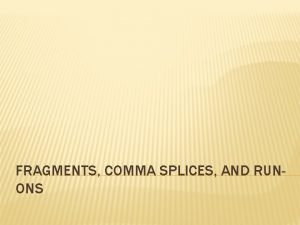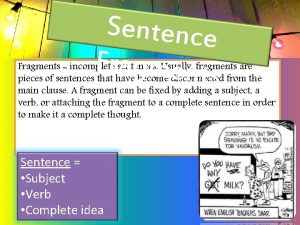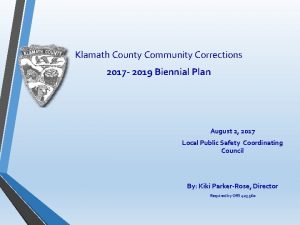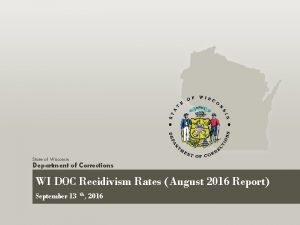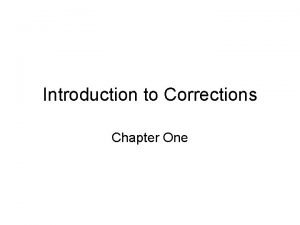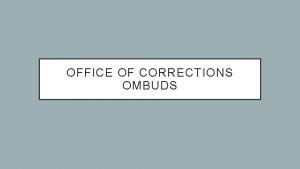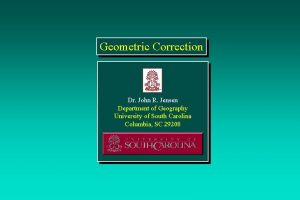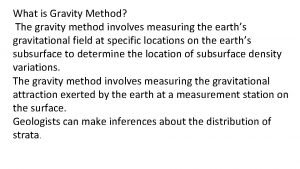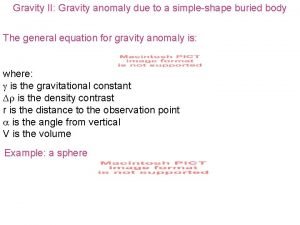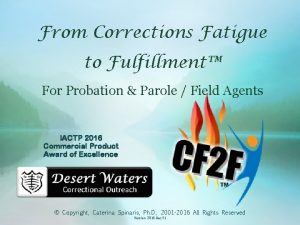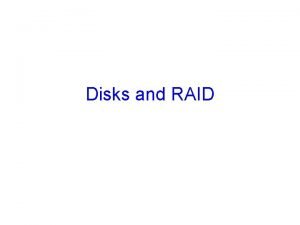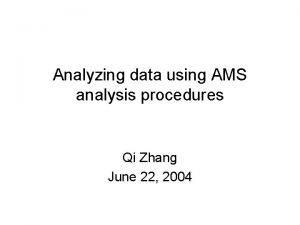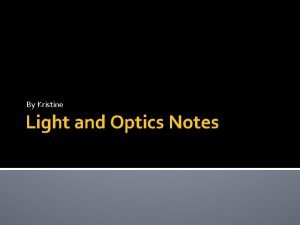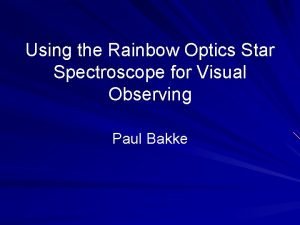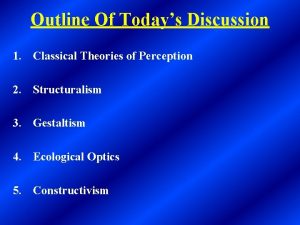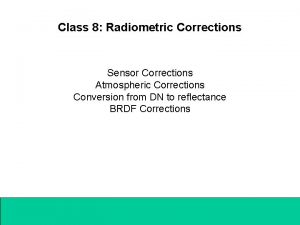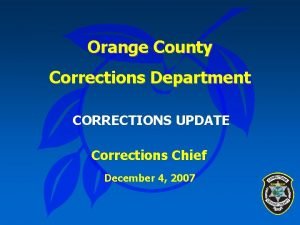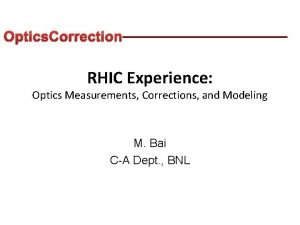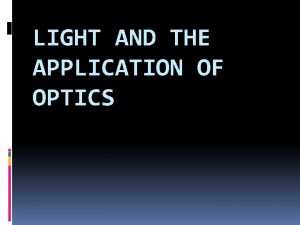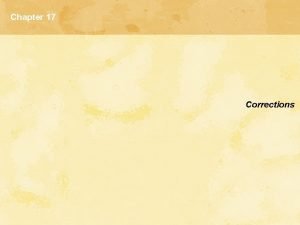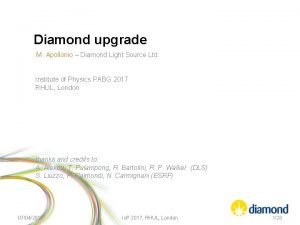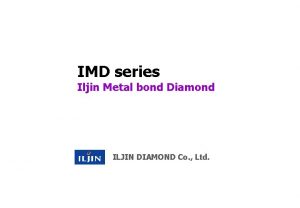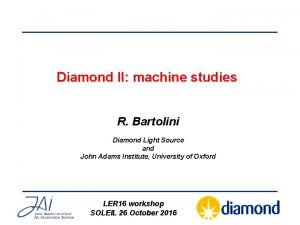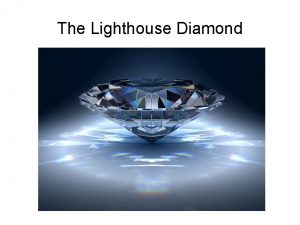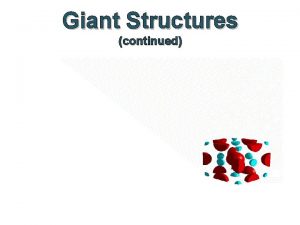Overview of optics corrections at Diamond and plans






























- Slides: 30

Overview of optics corrections at Diamond and plans for Diamond-II R. Bartolini Diamond Light Source and John Adams Institute for Accelerator Science University of Oxford USR Workshop, Beijing, 31 October 2012

Outline • Review of optics correction techniques at Diamond LOCO turn-by-turn data analysis old techniques experimental results • Initial studies for an ultra low emittance lattice for Diamond-II MBA with M = 4. 5. 6. 7 and modified 4 BA Thanks to T. Pulampong, R. Walker, J. Kay and N. Hammond USR Workshop, Beijing, 31 October 2012

Optics Correction ORM based – LOCO J. Safranek very successful for linear optics (beta-beating and coupling) Turn by turn data post processing linear optics LOCO outperform the analysis with tbt data Nonlinear optics FMA (now used everywhere!) driving terms (diamond, ESRF, SOLEIL, …) Old techniques Closest tune approach Quads variation for beta functions measurements USR Workshop, Beijing, 30 October 2012

Linear optics modelling with LOCO Linear Optics from Closed Orbit response matrix – J. Safranek et al. Hor. - beating Ver. - beating Modified version of LOCO with constraints on gradient variations (see ICFA Newsl, Dec’ 07) - beating reduced to 0. 4% rms Quadrupole variation reduced to 2% Results compatible with mag. meas. Quadrupole gradient variation FLS 2010, SLAC, 02 March 2010 LOCO has solved the problem of the correct implementation of the linear optics

Measured emittances and reduced coupling With beta-beating < 1% agreement on measured emittance and energy spread • Emittance [2. 78 - 2. 74] (2. 75) nm • Energy spread [1. 1 e-3 - 1. 0 -e 3] (1. 0 e-3) • betatron coupling corrected to ~ 0 using skew-quadrupoles • emittance coupling ~0. 08% achieved → vertical emittance ~ 2. 0 pm closest tune approach 0 6 mm rms vertical Pinhole camera images before/after coupling correction C. Thomas, R. Bartolini et al. PRSTAB 13, 022805, (2010) Diamond is currently running at reduced coupling 0. 3% (8 pm V) for users

Comparison machine/model and Lowest vertical emittance Model emittance Measured emittance -beating (rms) Coupling* ( y/ x) Vertical emittance ALS 6. 7 nm 0. 5 % 0. 1% 4 -7 pm APS 2. 5 nm 1% 0. 8% 20 pm ASP 10 nm 1% 0. 01% 1 -2 pm CLS 18 nm 17 -19 nm 4. 2% 0. 2% 36 pm 2. 74 nm 2. 7 -2. 8 nm 0. 4 % 0. 08% 2. 0 pm 4 nm 1% 0. 1% 3. 7 pm SLS 5. 6 nm 5. 4 -7 nm 4. 5% H; 1. 3% V 0. 02% 0. 9 pm SOLEIL 3. 73 nm 3. 70 -3. 75 nm 0. 3 % 0. 1% 4 pm SPEAR 3 9. 8 nm < 1% 0. 05% 5 pm SPring 8 3. 4 nm 3. 2 -3. 6 nm 1. 9% H; 1. 5% V 0. 2% 6. 4 pm SSRF 3. 9 nm 3. 8 -4. 0 nm <1% 0. 13% 5 pm Diamond ESRF * best achieved

Frequency map and detuning with momentum comparison machine vs model (II) FM measured FM model detuning with momentum model and measured Sextupole strengths variation less than 3% multipolar errors to dipoles, quadrupoles and sextupoles (up to b 10/a 9) correct magnetic lengths of magnetic elements fringe fields to dipoles and quadrupoles Substantial progress after correcting the frequency response of the Libera BPMs

Spectral line (-1, 1) in V associated with the sextupole resonance (-1, 2) Spectral line (-1, 1) from tracking data observed at all BPMs Comparison spectral line (-1, 1) from tracking data and measured ( -1, 1) observed at all BPMs model BPM number USR Workshop, Beijing, 31 October 2012 model; measured BPM number

Frequency map and detuning with momentum comparison machine vs model (III) DA measured DA model Synchrotron tune vs RF frequency The fit procedure based on the reconstruction of the measured FM and detunng with momentum describes well the dynamic aperture, the resonances excited and the dependence of the synchrotron tune vs RF frequency R. Bartolini et al. PRSTAB 14, 054003 (2011) USR Workshop, Beijing, 31 October 2012

Brilliance upgrade at Diamond Brilliance improvement reduce coupling 1% 0. 3% 300 m. A 500 m. A reducing diamond emittance with present hardware 2. 7 nm 2. 1 nm lattice test – ongoing: issues with SCWs An ultra low emittance lattice for Diamond-II 5 BA 7 BA, and modified 4 BA USR Workshop, Beijing, 31 October 2012

Emittance in 3 rd GLS, DR and colliders ~ 2012 ? Transverse coherence requires small emittance Diffraction limit at 0. 1 nm requires 8 pm

upgrade with Diamond-II (200 pm): 300 m. A and 1%K Assuming the operation with a 200 pm lattice Brilliance plot using U 27 – 72 periods 2 m long with Kmax = 2. 02 10 mm gap Tuning curves computed with Spectra 8. 0 USR Workshop, Beijing, 31 October 2012

Low emittance design for a Diamond-II upgrade (WIP) Wishlist for the upgrade of an existsting medium size mahcine • emittance lower than 200 pm in baseline (a factor at least 10 better than now) • minimal changes to the machines Leave the straight section as they are ! reuse grider and/or magnets if possible beamline remains where they are (no offset or angle) • Avoid long interruptions. Find options that can be phased. . . • Realistic engineering constraints (next…) USR Workshop, Beijing, 31 October 2012

Engineering constraints on lattice design Magnet and geometric constraints quadruple gradient (100 T/m) quadrupoles in dipoles (30 T/m) sextupoles (7000 T/m 2) MAX IV has 40. 4 T/m MAX IV has 8. 68 T/m MAX IV has 2*2216 T/m 2 space between magnets (hard edge) 10 cm MAX IV has 2. 5 cm Apertures = 20 mm diameter in arcs MAX IV inner diam. 22 mm USR Workshop, Beijing, 31 October 2012

5 BA – 140 pm

5 BA cell Optics matched and optimised with MOGA (quads vs emittance) 14 quads per cell 14 sextupoles 10 cm distance Straight section length slightly reduced 11 m 9. 5 m 8. 3 m 6. 5 m USR Workshop, Beijing, 31 October 2012

Gradient in bend < 15 T/m Quads gradient < 55 T/m Parameters Total length Natural emittance Natural chromaticity : hor. /ver. Straight length : long/short 561. 6 m 142. 5 pm-rad -152/-53 9. 5 m/ 6. 5 • • • Chrom(0, 0) S 7 X: SEXT, L=0. 1, K 2=786. 45 S 7 Y: SEXT, L=0. 2, K 2=-703. 26

5 BA sextupoles compensation 5π 5π 5 pi horizontal phase advance each cell, 5 pi vertical phase advance every two cells USR Workshop, Beijing, 31 October 2012

Some 5 BA solutions from MOGA 2 mm DA Optimisation just started Large tuneshift with amplitude to be compensated USR Workshop, Beijing, 31 October 2012

Issue with path length and alignment of straights Keeping the same circumference (same RF and harmonic number) generates an offset in the position of the straight sections. This will require offsetting the beamlines – 1 cm is deemed acceptable USR Workshop, Beijing, 31 October 2012

M. Borland quoting B. Hettel “if you can inject off-axis you have not pushed your lattice hard enough” 7 BA – 45 pm

7 BA - giving up more straight section length 14 quads per cell 8 Sextupoles per cell 10 cm distance Straight section length slightly reduced 11 m 8. 0 m 8. 3 m 5. 0 m V and H sextupoles in dispersion bump only USR Workshop, Beijing, 31 October 2012

7 BA – 45 pm emittance Parameters Total length Natural emittance Natural chromaticity : hor. /ver. Straight length : long/short Gradient in bend < 30 T/m Quads gradient <100 T/m 561. 6 m 45. 7 pm-rad Chromatic Sextupoles (0, 0) -348/-118. 7 8. 0 m/ 5. 0 m S 7 X: SEXT, L=0. 3, K 2=248. 9 S 7 Y: SEXT, L=0. 3, K 2=-325. 6

doubling the number of beamlines while still pushing the emittance down Modified 4 BA - 320 pm 4 BA with an additional short straight section between the dipole pairs emittance not pushed as for a pure 4 BA but can double the number of straight sections Length of additional straight sections forced to be at least 3 m while keeping the remaining 6. 7 m and 9 m straight sections

Modified 4 BA cell Broken the 4 BA cell to leave 3 m space 12 quads per cell 10 Sextupoles per cell 10 cm distance Straight section length slightly reduced 11 m 9. 7 m 8. 3 m 6. 7 m USR Workshop, Beijing, 31 October 2012

Modfied 4 BA – one superperiod Ring circumference shrinks from 561. 6 to 561. 0 -> loss 1 harmonic of RF Parameters Total length Natural emittance Natural chromaticity : hor. /ver. Straight length : long/short/middle 561. 0 m 314. 7 pm-rad -146. 7/-85. 6 9. 7/6. 7/3 Gradient in bend < 15 T/m Quads gradient < 70 T/m

4 BA 561 m footprint comparison with the existing ring Current Diamond Modified 4 BA Δ: 0. 19 cm Δ: 12. 07 cm Δ: 0. 39 cm

MOGA optimisation for DA just started Revising also tune point 12 quadrupoles per cell 10 sextuples per cell 1 mm DA insufficient (WIP) USR Workshop, Beijing, 31 October 2012

Conclusion and (some) open issues Leaving straight sections as they are looks very complicated. No space: the straight section must be slightly shortened 5 BA, 6 BA, 7 BA and a less aggressive design with more beamlines (4 BA – modified) are under investigation DA and lifetime studies crucial for all such designs Alternative injection schemes are under study Collective effects, Harmonic Cavity for bunch lengthening, round beams to be studied phase out installation strategy to avoid long interruptions still to be found. . However the subject is now seriously tackled by a large community, many rings already solved (PEP-X at 10 pm) and solutions will likely USR Workshop, Beijing, appear 31 October 2012

3 rd LOWERING workshop in Oxford 8 -10 July 2013 USR Workshop, Beijing, 31 October 2012
 Difference between ray optics and wave optics
Difference between ray optics and wave optics Venn diagram of geometric optics and physical optics
Venn diagram of geometric optics and physical optics The oldest community-based correctional program is
The oldest community-based correctional program is Comma splice examples and corrections
Comma splice examples and corrections Sentence fragment examples and corrections
Sentence fragment examples and corrections Criminal thinking errors
Criminal thinking errors Law, public safety, corrections and security answer key
Law, public safety, corrections and security answer key Accounting changes and error corrections
Accounting changes and error corrections Current and future issues in corrections
Current and future issues in corrections Larch corrections center
Larch corrections center Klamath county community corrections
Klamath county community corrections Florida department of corrections mission statement
Florida department of corrections mission statement Department of corrections wisconsin
Department of corrections wisconsin Intro to corrections
Intro to corrections Orange county community corrections
Orange county community corrections Joanna carns
Joanna carns Geometric corrections
Geometric corrections Gravity method of geophysical exploration
Gravity method of geophysical exploration Bouguer
Bouguer Corrections fatigue
Corrections fatigue Debye huckel equation
Debye huckel equation Essay corrections
Essay corrections Unraid write corrections to parity
Unraid write corrections to parity Fif airbeam
Fif airbeam Phys 241 purdue
Phys 241 purdue Disadvantage of optical fiber
Disadvantage of optical fiber Light and optics notes
Light and optics notes Light optics bill nye
Light optics bill nye Rainbow optics star spectroscope
Rainbow optics star spectroscope Gestaltism
Gestaltism Turba optics
Turba optics



